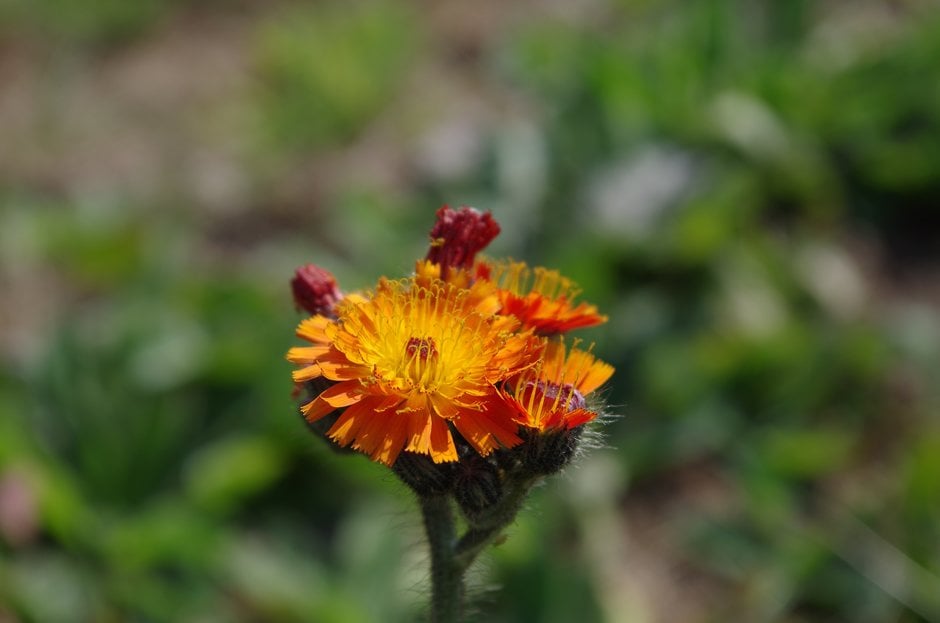Pilosella aurantiaca
fox and cubs
A hairy herbaceous perennial spreading by stolons to form clumps of basal rosettes of elliptical green leaves, and stems up to 20cm high topped by clusters of flowerheads, 1.5cm across, which in bud first reveal the deep russet-red undersides of the petals, then open out into rich orange florets, shading to golden orange towards the centre, in summer; it is widely naturalised in Britain, and is visited by bees for nectar and pollen
Other common names
Flora's paintbrushgolden mouse ear
see moreGrim-the-collier
missionary weed
orange-flowered hawkweed
red daisy
devil's paintbrush
Synonyms
Hieracium aurantiacumSize
Ultimate height
0.1–0.5 metresTime to ultimate height
1–2 yearsUltimate spread
0.5–1 metresGrowing conditions
Moisture
Well–drainedpH
Acid, Alkaline, NeutralColour & scent
| Stem | Flower | Foliage | Fruit | |
| Spring | Green | |||
|---|---|---|---|---|
| Summer | Orange | Green | ||
| Autumn | Green | |||
| Winter |
Position
- Full sun
- Partial shade
Aspect
West–facing or East–facing or South–facing
Exposure
Exposed or ShelteredDrought resistance
Yes Hardiness
H5Botanical details
- Family
- Asteraceae
- Native to GB / Ireland
- No
- Foliage
- Deciduous
- Habit
- Clump forming
- Genus
A genus of herbaceous perennials spreading by rhizomes or stolons, with hariy leaves in basal rosettes, and sometimes as smaller stem leaves. The stems are topped with dandelion-like flowers, in shades of mainly yellow, sometimes orange or more rarely red or white
- Name status
Correct
- Plant range
- Europe
How to grow
Cultivation
Grow in poor to moderately fertile, well-drained or even dry soil, in full sun or partial shade
Propagation
Propagate by seed, sown directly into position, or in containers outdoors, or by division in autumn or spring; it can also self-seed
Suggested planting locations and garden types
- City and courtyard gardens
- Prairie planting
- Coastal
- Cottage and informal garden
- Gravel garden
- Low Maintenance
- Flower borders and beds
- Wall side borders
Pruning
No pruning required
Pests
Generally pest-free
Diseases
Generally disease-free
Get involved
The Royal Horticultural Society is the UK’s leading gardening charity. We aim to enrich everyone’s life through plants, and make the UK a greener and more beautiful place.
